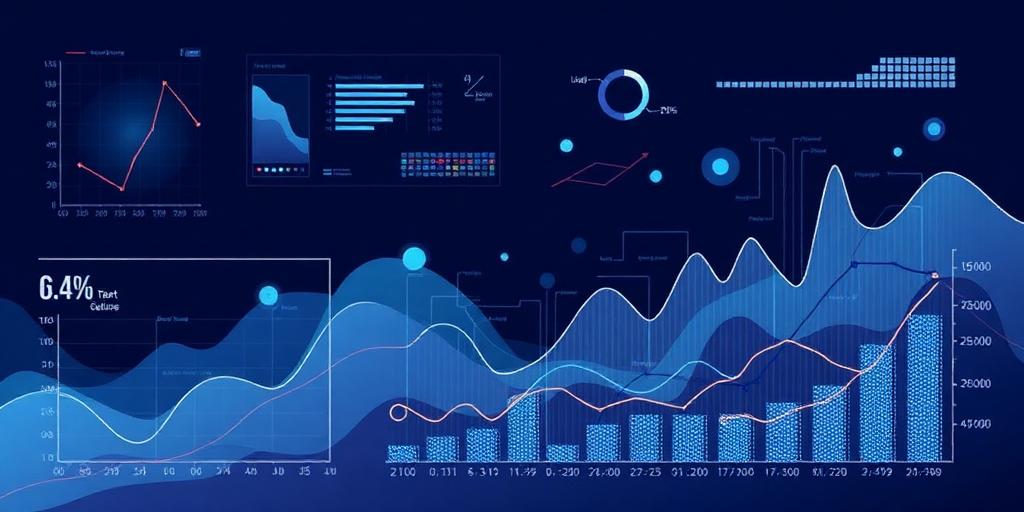The Top 10 Data Visualization Tools for Data Scientists
Data visualization is an indispensable discipline for data scientists. It transforms complex datasets into intuitive graphical representations, enabling rapid understanding, pattern identification, and effective communication of insights. In an era where data drives strategic decision-making, mastering these tools is not merely an advantage but a fundamental requirement for extracting actionable intelligence.
Why Data Visualization is Crucial for Data Scientists
The role of data visualization extends beyond aesthetics; it is a critical analytical and communication aid:
- Unveiling Patterns: Visualizations can reveal trends, anomalies, and correlations that might remain hidden in raw numerical data.
- Communicating Insights: Complex analytical findings are often best conveyed through visuals, making them accessible to both technical and non-technical stakeholders.
- Supporting Decision-Making: Clear, concise visualizations empower stakeholders to make informed decisions swiftly and confidently.
For data scientists, selecting the appropriate visualization tool is paramount. Each tool offers distinct strengths suited for specific analytical tasks and deployment environments. Below, we delineate the top 10 data visualization tools that are pivotal for data scientists.
The Top 10 Data Visualization Tools
1. Tableau
Tableau is an industry leader renowned for its intuitive drag-and-drop interface and robust capabilities for creating interactive dashboards and static visualizations. Its strength lies in its ability to connect to a vast array of data sources and its strong community support.
- Strengths: Highly interactive, powerful for large datasets, extensive connectivity, strong community.
- Use Cases: Business intelligence dashboards, exploratory data analysis, executive reporting.
2. Microsoft Power BI
Integrated seamlessly with the Microsoft ecosystem, Power BI offers powerful data modeling and visualization features. It is particularly strong for organizations already leveraging Microsoft products, providing a cost-effective and scalable solution.
- Strengths: Cost-effective, strong Excel integration, robust data modeling, enterprise-ready.
- Use Cases: Corporate dashboards, financial reporting, self-service BI.
3. Python Libraries (Matplotlib, Seaborn, Plotly)
Python's ecosystem offers unparalleled flexibility and programmatic control for data visualization:
- Matplotlib: The foundational plotting library, providing extensive control over every aspect of a plot. It is highly customizable but can be verbose.
- Seaborn: Built on Matplotlib, Seaborn simplifies the creation of statistical graphics, offering high-level functions for attractive and informative plots.
- Plotly: Enables the creation of interactive, web-based visualizations that can be viewed in a web browser, Jupyter notebooks, or embedded in web applications.
- Strengths: High customization, open-source, ideal for programmatic workflows, deep integration with data science pipelines.
- Use Cases: Research, advanced statistical analysis, custom dashboards within web applications.
4. R Libraries (ggplot2)
R, a language favored by statisticians, excels in data visualization, with ggplot2 being its flagship library. Based on the “Grammar of Graphics,” it allows for the construction of complex plots layer by layer, offering both flexibility and aesthetic appeal.
- Strengths: Elegant syntax, highly customizable, excellent for statistical graphics, strong academic community.
- Use Cases: Statistical modeling results visualization, academic research, complex data exploration.
5. D3.js (Data-Driven Documents)
D3.js is a JavaScript library for manipulating documents based on data. While it has a steep learning curve, D3 offers unparalleled control over the visual output, enabling the creation of highly customized, interactive, and unique web-based visualizations.
- Strengths: Ultimate customization, web-native, high performance, ideal for bespoke visualizations.
- Use Cases: Custom interactive dashboards, complex network graphs, novel data stories on the web.
6. Looker (Google Cloud)
Looker is an enterprise-grade BI platform acquired by Google Cloud, focusing on data exploration, analysis, and visualization. Its unique LookML language allows for defining data models, ensuring consistency and reusability across the organization.
- Strengths: Centralized data modeling, powerful for complex data, robust security, strong governance.
- Use Cases: Centralized BI, data governance, self-service analytics for business users.
7. Qlik Sense
Qlik Sense is a self-service data visualization and discovery application powered by Qlik's Associative Engine. This engine allows users to explore data freely, revealing insights that might be missed in hierarchical or query-based models.
- Strengths: Associative data model, intuitive drag-and-drop, powerful self-service capabilities.
- Use Cases: Ad-hoc analysis, rapid prototyping, discovery of hidden relationships in data.
8. Apache Superset
Apache Superset is an open-source, cloud-native data exploration and visualization platform. It supports a wide array of databases and offers a modern, intuitive interface for creating dashboards and charts. Its scalability and cost-effectiveness make it a strong contender for startups and large enterprises alike.
- Strengths: Open-source, scalable, cloud-native, wide database support, modern UI.
- Use Cases: Internal dashboards, data exploration, lightweight BI solutions.
9. Grafana
While often associated with monitoring and observability, Grafana is a powerful open-source platform for visualizing time-series data. It excels at displaying metrics and logs from various data sources in real-time dashboards.
- Strengths: Real-time monitoring, excellent for time-series data, extensive data source support, strong plugin ecosystem.
- Use Cases: System monitoring, IoT data visualization, operational analytics.
10. Bokeh
Bokeh is a Python library that enables the creation of interactive plots and dashboards for modern web browsers. It provides elegant, concise construction of versatile graphics, ideal for data applications and interactive data exploration.
- Strengths: Web-native, interactive, Pythonic syntax, good for data applications.
- Use Cases: Web-based interactive data apps, scientific visualizations, dashboards for web deployment.
Choosing the Right Tool for Your Needs
The selection of a data visualization tool is contingent upon several factors, including the nature of the data, the desired level of interactivity, integration requirements, team skillset, and budget constraints. For data scientists, proficiency in at least one programmatic library (Python or R) is essential for bespoke analyses, while familiarity with a commercial BI tool (Tableau, Power BI) is beneficial for broader organizational reporting.
Conclusion
Effective data visualization is a cornerstone of modern data science. The tools highlighted herein represent the vanguard of capabilities available to data scientists today. By mastering these platforms, data professionals can transform raw data into compelling narratives, driving informed decisions and unlocking significant value for their organizations. Continual exploration of new tools and techniques will ensure data scientists remain at the forefront of insight generation.




